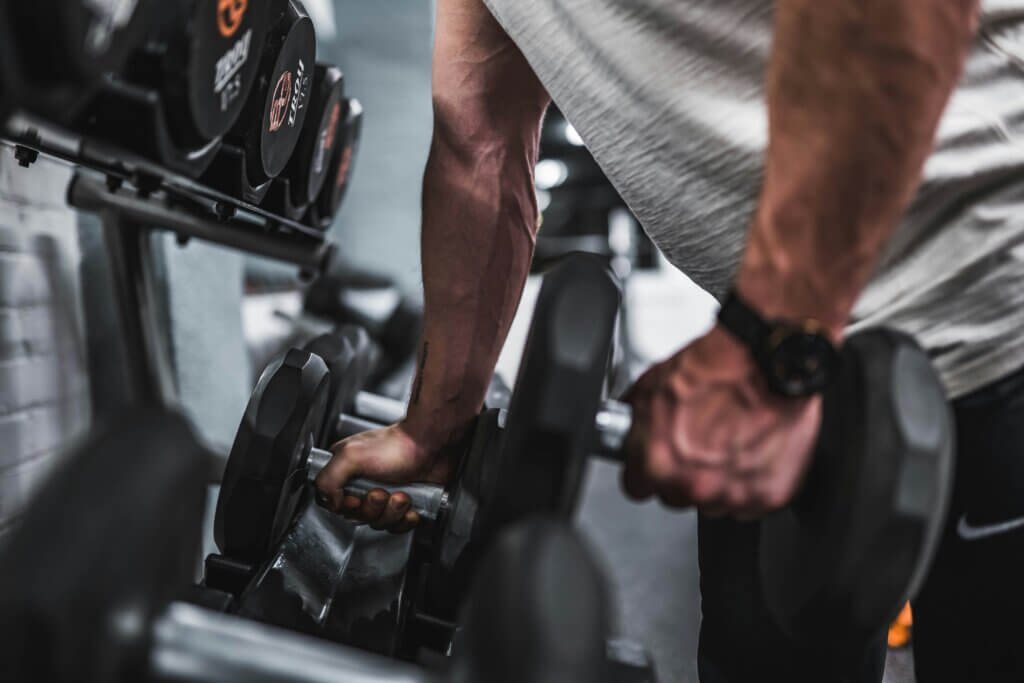Looking to step up your workout game and achieve greater resistance and strength? Look no further than these workout accessories designed specifically to enhance your training. From resistance bands to kettlebells, these tools provide an extra challenge to your workouts, helping you build endurance and increase muscle strength. Whether you’re a seasoned athlete or just starting out on your fitness journey, these workout accessories are sure to take your training to the next level. Say goodbye to plateaus and hello to new levels of strength and power with these must-have accessories.
Resistance Bands
Types of resistance bands
Resistance bands come in a variety of types, each catering to different fitness levels and exercise needs. There are loop bands, which typically form a closed loop and are great for targeting specific muscles or for adding resistance to bodyweight exercises. Tube bands, on the other hand, have handles on each end and can be used for a wide range of exercises, including both upper and lower body movements. Lastly, fabric bands are made of a non-slip material and are ideal for targeting larger muscle groups.
Benefits of using resistance bands
Using resistance bands in your workouts offers a plethora of benefits. Firstly, they provide variable resistance, meaning that the tension increases as the band is stretched. This not only challenges your muscles throughout the entire range of motion but also helps improve muscle strength and endurance. Secondly, resistance bands are versatile and portable, making them ideal for both home and gym workouts. Additionally, they are joint-friendly, as the bands put less stress on the joints compared to traditional weights.
Exercises with resistance bands
Resistance bands can be used to target nearly every major muscle group in the body. Some popular exercises using resistance bands include bicep curls, tricep extensions, squats, lunges, chest presses, and shoulder raises. These exercises provide a full-body workout and can be easily modified to suit different fitness levels. Whether you’re a beginner or an advanced athlete, resistance bands offer a challenging and effective way to build strength and increase muscular endurance.
Weighted Vest
Advantages of using a weighted vest
Wearing a weighted vest during your workouts can take your training to the next level. One of the key advantages is that it adds resistance to your bodyweight exercises, such as push-ups, squats, and lunges, making them more challenging and ultimately leading to greater strength gains. Another benefit of using a weighted vest is that it helps improve cardiovascular fitness by increasing the intensity of your workouts. Additionally, weighted vests can help improve bone density and muscular endurance.
How to choose the right weighted vest
Choosing the right weighted vest is essential for a safe and effective workout. Firstly, consider the weight capacity of the vest. Start with a weight that is appropriate for your fitness level and gradually increase as you get stronger. Secondly, make sure the vest is adjustable to ensure a comfortable fit. Look for vests with adjustable straps or buckles that allow you to customize the fit. Lastly, consider the material and design of the vest to ensure durability and comfort during your workouts.
Exercises with a weighted vest
A weighted vest can be used for a wide range of exercises, including bodyweight exercises, cardio activities, and strength training exercises. Some popular exercises using a weighted vest include push-ups, squats, lunges, burpees, jogging, and hiking. By adding resistance to these exercises, a weighted vest helps increase the intensity and challenge your muscles, leading to greater strength gains and improved cardiovascular fitness.

Dumbbells
Types of dumbbells
Dumbbells are a versatile and popular choice for strength training, and they come in various types. Fixed-weight dumbbells have a fixed weight and are typically made of metal or coated with rubber for a comfortable grip. Adjustable dumbbells allow you to change the weight plates, making them more space-efficient and flexible for different exercises. Lastly, neoprene dumbbells have a soft, easy-to-grip coating that provides additional comfort and prevents slippage during workouts.
Benefits of using dumbbells
Incorporating dumbbells into your workout routine offers numerous benefits. Firstly, dumbbells allow for a greater range of motion compared to resistance machines, which can enhance muscle activation and joint mobility. Secondly, using dumbbells engages the stabilizer muscles, as they require additional effort to maintain balance throughout the exercise. Additionally, dumbbells provide a functional and practical way to build strength, as they can be used for a variety of exercises that mimic everyday movements.
Exercises with dumbbells
Dumbbells can be utilized for a wide range of exercises targeting different muscle groups. Popular exercises include bicep curls, shoulder presses, chest presses, tricep extensions, lunges, squats, and deadlifts. These exercises can be modified based on your fitness level and specific goals. By incorporating dumbbells into your workouts, you can improve overall strength, muscle tone, and functional movement patterns.
Kettlebells
Advantages of using kettlebells
Kettlebells are a unique and effective tool for resistance training, offering several advantages. Firstly, the shape and design of kettlebells provide a different stimulus for the muscles compared to traditional dumbbells or barbells. Kettlebell exercises require dynamic movements and engage multiple muscle groups simultaneously, improving coordination and functional strength. Secondly, kettlebell workouts are highly efficient, as they combine cardiovascular conditioning with strength training, resulting in an intense full-body workout.
Different kettlebell exercises
There is a wide variety of kettlebell exercises that can target almost every muscle group. Some popular kettlebell exercises include kettlebell swings, goblet squats, Turkish get-ups, kettlebell snatches, and kettlebell rows. These exercises can be performed individually or incorporated into circuit-style workouts for an added challenge. Kettlebell exercises offer versatility, allowing you to challenge your muscles in new and effective ways while improving core stability, grip strength, and overall functional fitness.
Safety precautions when using kettlebells
When using kettlebells, it is important to prioritize safety to prevent injuries. Firstly, ensure that you have a solid grip on the kettlebell handle and maintain control throughout the exercise. Keep your wrist straight and avoid excessive swinging or jerking motions. Secondly, start with a lighter kettlebell to practice proper form before progressing to heavier weights. It is crucial to engage your core and maintain proper posture to protect your lower back. Lastly, always warm up before kettlebell workouts and listen to your body to avoid overexertion.

Ankle Weights
Benefits of using ankle weights
Ankle weights are a simple and effective accessory for resistance training, offering various benefits. Firstly, they increase the resistance during lower body exercises such as leg lifts, squats, and lunges, which helps strengthen the muscles and improve muscle endurance. Secondly, ankle weights can enhance cardiovascular fitness when incorporated into activities like walking or jogging, as the additional weight increases the intensity of the exercise. Additionally, ankle weights can help improve balance and stability by challenging the muscles responsible for maintaining equilibrium.
How to properly use ankle weights
Using ankle weights correctly is essential to minimize the risk of injury and maximize the benefits. Firstly, start with lighter weights and gradually increase the resistance as your strength improves. This allows your muscles and joints to adapt gradually without excessive strain. Secondly, ensure that the ankle weights are securely fastened and positioned snugly around your ankles, avoiding any unnecessary movement. Lastly, maintain proper form throughout the exercises, paying attention to your body alignment and avoiding any excessive strain on the joints.
Exercises with ankle weights
Ankle weights can be incorporated into various exercises to target the lower body muscles. Some effective exercises include standing leg lifts, glute bridges, side leg raises, donkey kicks, and walking or jogging with ankle weights. These exercises can be performed at home or at the gym and provide an additional challenge to your workouts, helping you to build strength, tone your muscles, and enhance overall lower body endurance.
Sandbags
Benefits of using sandbags for resistance training
Sandbags offer a unique and functional tool for resistance training, providing several benefits. Firstly, sandbags provide an unstable and dynamic load, forcing your muscles to work harder to stabilize the weight. This helps improve balance, coordination, and core strength. Secondly, sandbags are versatile and adaptable to various exercises, allowing you to mimic real-life movements and develop functional strength. Additionally, sandbags can be adjusted in weight by adding or removing sand, making them suitable for all fitness levels.
Exercises with sandbags
Sandbag training offers a wide range of exercises that target both upper and lower body muscles. Some popular sandbag exercises include sandbag squats, cleans, lunges, overhead presses, bear hug carries, and rotational movements. These exercises can be performed individually or combined into circuits for a challenging full-body workout. Sandbags provide a different training stimulus compared to traditional weights, making them an effective tool for building strength, improving stability, and enhancing overall functional fitness.
How to choose the right sandbag
Choosing the right sandbag is important to ensure a safe and effective workout. Firstly, consider the weight capacity of the sandbag. Start with a weight that is appropriate for your fitness level and progressively increase the load as you get stronger. Secondly, look for sandbags with durable materials, such as reinforced stitching and tear-resistant fabric, to withstand the rigors of resistance training. Additionally, opt for sandbags with multiple handles that allow for various grip positions and exercises.

Resistance Training Machines
Types of resistance training machines
Resistance training machines offer a structured and controlled way to target specific muscle groups. There are various types of resistance training machines, including cable machines, leg press machines, chest press machines, lat pulldown machines, and shoulder press machines. Each machine is designed to isolate specific muscles and provide a consistent resistance throughout the exercise. These machines are commonly found in gyms and offer an accessible option for individuals looking to build strength and tone specific muscle groups.
Benefits of using resistance training machines
Using resistance training machines comes with several benefits. Firstly, they provide a guided and controlled movement pattern, reducing the risk of injury and ensuring proper form and technique. Secondly, resistance machines allow for easy weight adjustments, making it convenient to target different muscle groups without changing multiple sets of weights. Additionally, resistance machines are beginner-friendly, as they provide stability and support during exercises, allowing individuals to focus on muscle activation and building strength.
Exercises with resistance training machines
Resistance training machines can be used to target specific muscle groups in a controlled and isolated manner. Some common exercises include chest presses, lat pulldowns, leg presses, hamstring curls, shoulder presses, and leg extensions. These machines are versatile and can be adjusted to accommodate different fitness levels and goals. Whether you are a beginner or an advanced lifter, incorporating resistance training machines into your workouts can help you build strength and improve muscle definition.
Medicine Balls
Advantages of using medicine balls
Medicine balls are a versatile and functional tool for resistance training, offering several advantages. Firstly, they allow for explosive and dynamic movements that engage multiple muscle groups, improving power, coordination, and athletic performance. Secondly, medicine balls provide a safe and effective way to develop core strength, as the unstable nature of the ball requires the engagement of stabilizer muscles. Additionally, medicine balls can be used for both strength and cardiovascular exercises, making them a time-efficient option for a full-body workout.
Different exercises with medicine balls
There is a wide range of exercises that can be performed using medicine balls, targeting various muscle groups and movement patterns. Some popular medicine ball exercises include medicine ball slams, rotational throws, woodchoppers, Russian twists, push-ups with medicine ball handoffs, and wall balls. These exercises can be modified based on your fitness level and specific goals. By incorporating medicine balls into your workouts, you can improve power, enhance core stability, and add variety to your training routine.
Choosing the right medicine ball
Choosing the right medicine ball is important to ensure a safe and effective workout. Firstly, consider the weight of the medicine ball. Start with a weight that allows you to maintain proper form and complete the desired number of repetitions with control. Secondly, opt for a medicine ball with a textured surface, as it provides a better grip and prevents slipping during exercises. Additionally, choose a ball with a durable outer layer to withstand the impact of dynamic movements and ensure longevity.

Weightlifting Belt
Benefits of using a weightlifting belt
Weightlifting belts provide several benefits for individuals engaging in heavy strength training exercises. Firstly, a weightlifting belt provides support to the lower back and abdominal muscles, helping stabilize the spine during heavy lifts and reducing the risk of injury. Secondly, wearing a weightlifting belt promotes proper breathing techniques, as it encourages individuals to engage their core and diaphragm muscles for increased stability. Additionally, a weightlifting belt can enhance performance by providing a more solid base to push against during lifts.
How to properly use a weightlifting belt
Using a weightlifting belt correctly is crucial to maximize its benefits and prevent potential injury. Firstly, position the belt snugly around your waist, just above the hip bones, ensuring a secure fit without restricting your breathing. Secondly, engage your core and brace your abdominals against the belt before performing heavy lifts. It is important to remember that a weightlifting belt is not meant to be worn at all times but rather during exercises that put significant stress on the lower back, such as squats and deadlifts.
Factors to consider when choosing a weightlifting belt
When selecting a weightlifting belt, there are a few factors to consider to ensure the right fit and functionality. Firstly, choose a belt with a width that allows for proper abdominal bracing and support. Typically, belts between 4 and 6 inches in width are recommended for most lifters. Secondly, consider the closure system of the belt. Options include single prong, double prong, or lever belts, each with their own advantages and disadvantages. Lastly, choose a belt made of high-quality materials that provide durability and support during intense workouts.
Push-Up Bars
Advantages of using push-up bars
Push-up bars, also known as push-up handles or push-up stands, offer several advantages for upper body strength training. Firstly, they allow for a greater range of motion during push-ups, as they elevate your hands off the floor. This increased range of motion helps provide a deeper stretch and contraction of the chest and triceps muscles, leading to greater strength gains. Secondly, push-up bars promote proper form and wrist alignment, reducing strain on the wrists and allowing for a more comfortable exercise experience.
Proper form and technique when using push-up bars
Using proper form and technique when using push-up bars is essential to maximize the benefits and prevent injury. Firstly, position yourself in a high plank position with your hands gripping the push-up bars, ensuring that your wrists are aligned with your shoulders. Secondly, engage your core and maintain a straight line from your head to your heels throughout the exercise. Lower your body by bending your elbows, keeping them close to your sides, and then push back up to the starting position. Avoid arching your back or letting your hips sag during the movement.
Variations of push-up exercises with push-up bars
Push-up bars offer the flexibility to perform various push-up variations, targeting different muscle groups and adding variety to your workouts. Some popular push-up variations include wide-grip push-ups, close-grip push-ups, plyometric push-ups, decline push-ups, and spiderman push-ups. These variations can be tailored to your fitness level and specific goals. Incorporating push-up bars into your workouts allows for challenging upper body exercises that engage multiple muscles simultaneously, helping you build strength and develop muscular definition.


